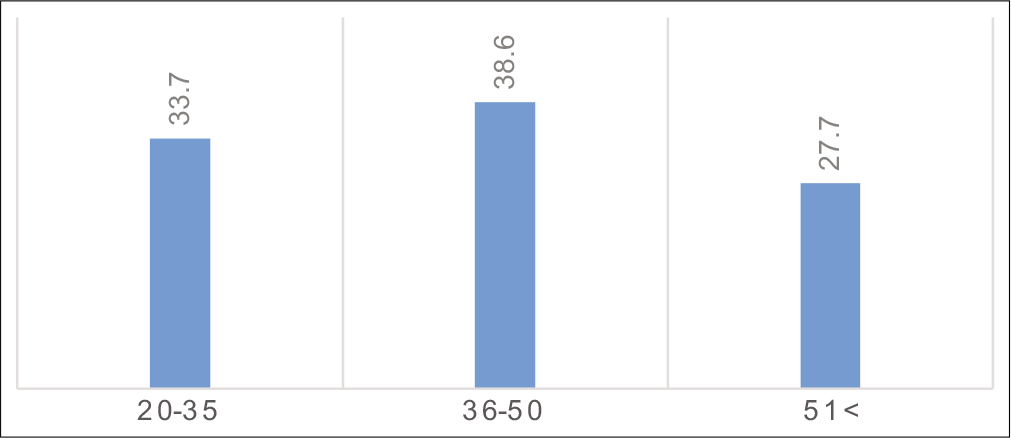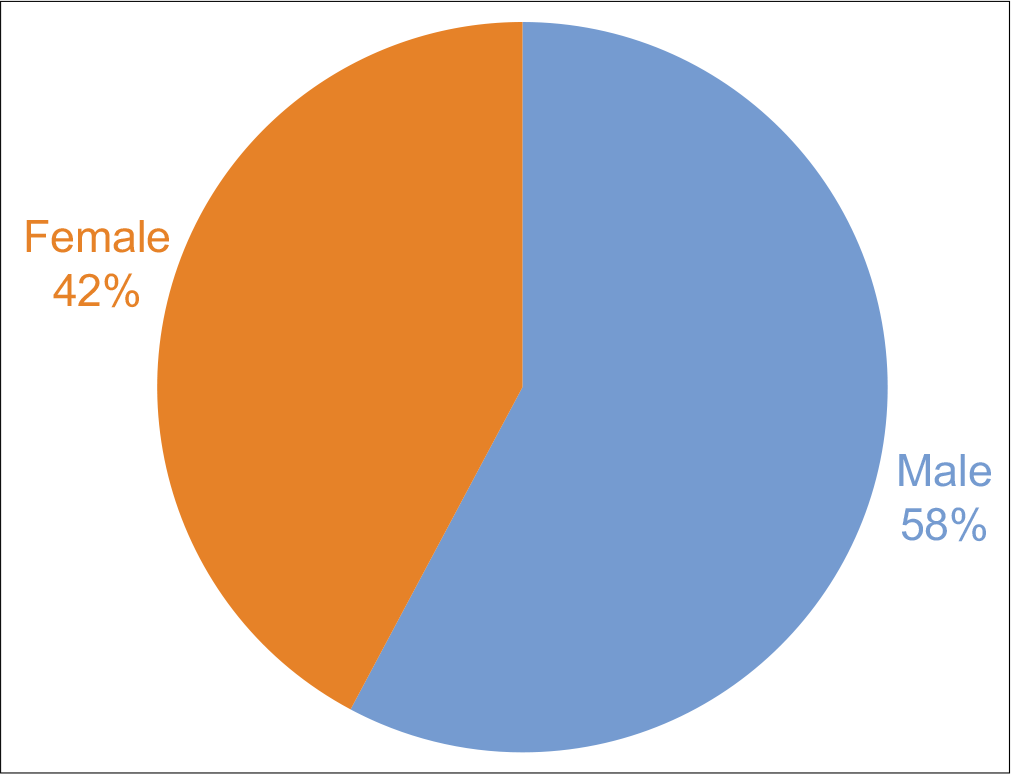Translate this page into:
Myths about dentistry among rural population in Tiruchengode
*Corresponding author: R. Prakash, Associate Professor and Head, Department of Public Health Dentistry, KSR Institute of Dental Science and Research, Tiruchengode, Tamil Nadu, India. kash3648@gmail.com
-
Received: ,
Accepted: ,
How to cite this article: Raveena M, Tusmitha RG, Prakash R. Myths about dentistry among rural population in Tiruchengode. J Academy Dent Educ 2020;6(1 & 2):1-4.
Abstract
Objectives:
Myths are used to convey religious or idealized experience and to establish behavioural models. Due to false traditional beliefs and non-scientific knowledge people have myths about dentistry. The aim of this study is to assess the myths prevalent among the population in two villages near Tiruchegode in Tamilnadu.
Materials and Methods:
A descriptive cross-sectional questionnaire survey was conducted in a sample of 310 rural residents. The questionnaire consisted of 15 closed ended questions on demographic details and myths regarding dentistry.
Results:
The study results showed about 65.7% of subjects agreed that placing cloves or chewing tobacco relieves pain due to decay. Majority of the study population (67.5%) considered that it is better to extract the tooth rather than saving it. More than half of the study subjects (51.2%) agreed that dental treatment and visit to dentist should be avoided during pregnancy. Around 34.3% of people believed that extraction of teeth in the upper jaw caused loss of vision.
Conclusion:
The findings of the study showed the prevalence of various myths regarding dentistry and dental treatment is present among rural population in two villages near Tiruchengode. It is the duty of the dentist to create awareness among rural population to mitigate the myths prevailing about dentistry.
Keywords
Myths
Dentistry
Taboos
Oral health
INTRODUCTION
The word myth is derived from the Greek word “MYTHOS.” As a part of cultural identity, the stories shared by a group of people are identified as myths, which has a strong influence in seeking treatment during illness.[1] Myths are used to convey religious or idealized experience and to establish behavioral models. Due to false traditional beliefs and non-scientific knowledge, people have myths about dentistry. This creates hindrance in the recognition of scientific and contemporary dental treatment-seeking behaviors.[2]
Synonymous with other health-care fields, there are many myths in dentistry too. Although many myths are harmless, while some have consequences such as inadequate care of their oral health and treatment-seeking behavior. Oral health problems such as dental caries, periodontal disease, and oral cancer are more prevalent globally affecting a significant population. The burden of oral disease falls on people who are more disadvantaged and poor. Majority of this population are illiterate and lack awareness about importance of oral health.[3]
India, a developing country, has many challenges in rendering health services to its people. Majority of Indian population lives in rural areas and health inequalities exist between rural and urban areas in India.[4] The population of India has diverse cultural and religious background. Sociocultural factors and traditional beliefs are considered important in the development of false perceptions and myths.
There are very few studies done on myths among rural population in India. Hence, this study was done with the aim to assess the myths prevalent among the population in two villages near Tiruchengode in Tamil Nadu.
MATERIAL AND METHODS
A cross-sectional questionnaire study was conducted in two villages near Tiruchengode taluk to assess the prevalence of myths among rural population. The study protocol was approved by the Institutional Ethical Committee of K.S.R Institute of Dental Science and Research. Informed consent was obtained from those who participated in the study.
The study population included about 300 subjects who were selected by convenience sampling method. A self-administered 15-item closed-ended questionnaire in vernacular language was given to the participants of the study. The questionnaire consisted of demographic details and myths regarding dentistry. The answers were given on a 5-point Likert type of scale from strongly agree to strongly disagree. Before the start of the survey, a pilot study was done among 20 subjects to validate the questionnaire.
A door-to-door survey was done among the subjects who were present at the time of the survey. Subjects who were above 18 years and who gave consent were included in the study.
The data collected from were systematically compiled and statistically analyzed using SPSS package version 20.0. Descriptive statistical analysis was done. Chi-square test was done to assess the relation between demographic variables and myths. P < 0.05 was considered statistically significant.
RESULTS
A descriptive cross-sectional survey questionnaire consisting of 15 questions was conducted in a sample of 310 rural residents. Age of the study subjects ranged from 20 to 70 years. The distribution of subjects according to age and gender is given in Figures 1 and 2. Table 1 shows the proportion of subjects who answered to 15 questions about myths about dentistry among rural population.

- Distribution of the study participants in age groups.

- Distribution of the study participants according to gender.
| S. No. | Questions | Agree (%) | Disagree (%) | Do not know (%) |
|---|---|---|---|---|
| 1. | Placing cloves or chewing tobacco in a decayed tooth relieves pain | 67.7 | 24.8 | 7.6 |
| 2. | Paddy incision has to be made by child’s uncle for initial tooth eruption | 66.4 | 22.1 | 11.6 |
| 3. | Wisdom teeth are related to human intelligence | 38.9 | 39.2 | 21.8 |
| 4. | Extraction of upper teeth causes loss of vision | 34.3 | 45.2 | 20.5 |
| 5. | Women lose a tooth for each child they give birth to | 19.8 | 50.5 | 29.7 |
| 6. | Dental treatment and visits to dentist should be avoided during pregnancy | 51.2 | 35.6 | 13.2 |
| 7. | Worm is there inside decayed tooth | 61.4 | 30.3 | 8.3 |
| 8. | Any tooth pain due to decay, it is better to extract rather than saving | 65.7 | 31.4 | 3.0 |
| 9. | Whiter teeth means healthier teeth | 39.3 | 49.8 | 10.9 |
| 10. | Raw brinjal not given to children as they blacken the teeth | 38.4 | 47.0 | 14.2 |
| 11. | Young dentist lack skills compared to experienced dentist | 49.8 | 44.8 | 5.3 |
| 12. | Male dentist is preferred than female dentist | 52.8 | 43.9 | 3.3 |
| 13. | Dental treatments are always painful | 40.9 | 55.8 | 3.3 |
| 14. | Pain due to dental treatment is due to less knowledge of dentist | 26.7 | 70.6 | 2.6 |
| 15. | Dentist is a doctor | 93.4 | 6 | 0.7 |
About 65.7% of subjects agreed that placing cloves or chewing tobacco relieves pain due to decay. Majority of the study population (67.5%) considered that it is better to extract the tooth rather than saving it.
More than half of the study subjects (51.2%) agreed that dental treatment and visit to dentist should be avoided during pregnancy. Around 34.3% of people believed that extraction of teeth in the upper jaw caused loss of vision.
When question about belief whether “paddy incision has to be made by the child’s uncle to initiate tooth eruption,” about 66.4% of the subjects agreed to the statement. Nearly 61.4% of the study subjects believe that worm is present in the decayed tooth. About 40.9% of people felt that dental treatment is painful. Almost 93.4% of subjects strongly agree that dentists are doctors.
DISCUSSION
Myths can be prevalent in a population due to a variety of reasons such as poor education, cultural beliefs, and social misconceptions. They are usually passed from one generation to the next. It is difficult to break this chain.
The present study focuses on the myths and attitude about dental treatment among rural population. The findings of our study states that about 67.7% of respondents think that placing cloves or chewing tobacco in decayed tooth relieves pain, about 96% agreed to the above statement in a study done in Bareilly district.[4] This shows that majority of rural people are of the opinion that home remedies are better for dental treatment.
Our survey showed that 34.3% of them think that extraction of upper teeth causes loss of vision. This result was similar to a survey done in Maduravoyil among general population.[5] Around 55.8% of subjects in rural population of Mangalore city agree to above statement.[1] This myth may be present due to the close proximity of the maxillary tooth to the eyes and infection of maxillary tooth causing swelling near the eyes.
Our study showed that about 51.2% of the subjects thought that dental treatment and visits to the dentists should be avoided during pregnancy. However, 71% of the subjects in a study in North India think that dental treatments should not be done during pregnancy.[6] This may be due to the belief that dental treatment during pregnancy will affect the development of fetus.
Many respondents (75%) in this study believed that any tooth pain due to decay, it is better to extract than saving. In a study done in Maduravoyal, Chennai, about 57.6% of respondents believe that it is better to extract the teeth rather than saving.[4] This might be because of their low knowledge about treatment modalities for dental caries.
In our study, 40.9% of the subjects strongly agrees that dental treatment is painful. Similarly, in a research done in Mangalore city, more than half of study subjects 55.5% believes that dental treatment are painful.[1] This kind of myth can act as a barrier to the treatment-seeking behavior of the people.
The later part of the 20th century saw a transformation in both general health and oral health unmatched in history.[2] The deep-seated irrational thoughts and beliefs among the masses of rural community make them less privileged and unfortunate to appreciate the advancements in dental profession.[1] The reorientation of health services in which every health professional should educate the people and create awareness about general health and oral health so that the myths about dentistry could be overcome.
Limitations of the study
As the study is limited to a certain geographical area, the study results cannot be generalized
Sample size of the study is small
Most myths included in the study are framed from common beliefs of the people and do not have established literature proof.
CONCLUSION
From the results of the study, we can conclude that the prevalence of various myths regarding dentistry and dental treatment is present among rural population in two villages near Tiruchengode. It is the duty of the dentist to create awareness among rural population to mitigate the myths prevailing about dentistry. Health education programs should be organized to reduce the disparities between rural and urban communities.
Declaration of patient consent
Patient’s consent not required as there are no patients in this study.
Financial support and sponsorship
Nil.
Conflicts of interest
There are no conflicts of interest.
References
- Prevalence of dental myth and misconceptions among the rural population of Mangaluru city: A cross sectional study. Austin J Dent. 2018;5:1120.
- [CrossRef] [Google Scholar]
- Dental myth, fallacies and misconceptions in rural population of Bhopal city: A cross-sectional study. Asian J Dent Sci. 2018;1:1-7.
- [Google Scholar]
- Myths related to dentistry in the rural population of Bareilly district: A cross-sectional survey. J Dent Sci Oral Rehab. 2014;5:58-64.
- [Google Scholar]
- Assessment of the prevalence of myths regarding oral health among general population in Maduravoyal, Chennai. J Educ Ethics Dent. 2012;2:85-91.
- [CrossRef] [Google Scholar]
- Myths regarding oral health among patients visiting a dental school in North India: A cross-sectional survey. Int J Oral Health Sci. 2015;5:9-14.
- [CrossRef] [Google Scholar]






